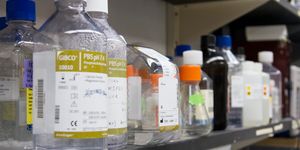The Passing of a Neutrino Hunting Pioneer
Masatoshi Koshiba, a revered Japanese physicist known for his groundbreaking work on cosmic neutrino detection, passed awasy last Thursday, November 12. His stellar career made neutrino research an essential part of astrophysics.
A neutrino is a ghostly, elementary particle that's electrically neutral and has a 1/2 spin. It is very difficult to track down because of its reluctance to interact with matter. The neutrino was once thought to have no mass. Building on the work of another neutrino pioneer, American physicist and chemist Raymond Davis Jr, Koshiba helped to "put some weight" on the ghostly particle.
Starting in the 1960s, Davis famously led a two-decade project called the Homestake experiment, the first-ever attempt to capture neutrinos emitted from Sun's fusion reaction. Using an emptied gold mine filled with 600 tonnes of dry-cleaning fluid, Davis' team successfully detected solar neutrinos, but only one-third amount predicted by the standard physics model.
This so-called "solar-neutrino problem" challenged prior hypotheses and opened the door to the idea that the neutrino might actually have mass. In the 1980s, Koshiba and his team took on a second neutrino hunting project: inside an abandoned mine in central Japan, one kilometer underneath the surface, the team built the Kamioka Nucleon Decay Experiment (Kamiokande detector for short), a mega instrument commissioned by Japan's Institute for Cosmic Ray Research (ICRR).
The mining cave houses a vast tank filled with 3,000 tons of pure water and surrounded by thousands photomultiplier tubes. This setup allowed Koshiba and colleagues to detect the faint flashes of light (called Cherenkov radiation), a product when neutrinos collide with atomic nuclei of water. They were able to confirm Davis's results and also detected neutrinos from a distant supernova explosion later in 1987. For this reason, Davis and Koshiba were honored in 2002 with Nobel Prize for Physics.
Inside Japan's Big Physics | Part one: Super Kamiokande (Nature Video)
In 1998, Kamiokande detector's successor Super-Kamiokande went on to make another groundbreaking discovery about neutrino's true nature: the elusive particle oscillates between two different "flavors": tau and muon. The new discovery solidified the theory that neutrinos have finite mass and indicated an extension of the Standard Model.
There's no doubt that Koshiba's pioneering discoveries have created a lasting legacy, which continues to drive progress in neutrino astronomy these days.
Source: Physics World









